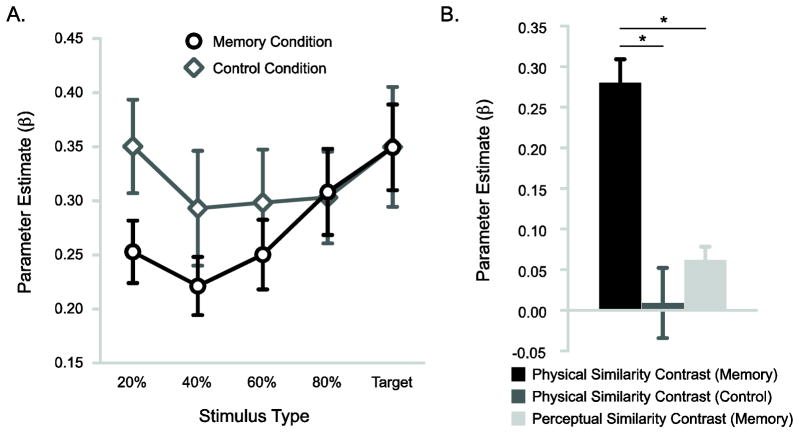Figure 2.
Region of interest results. A, FFA response was modulated by the degree of feature overlap between the probe face and the Target face being held in WM. This effect was specific to the Memory task. B, The pattern of modulation was more consistent with a linear effect, where response amplitude was determined by the sensory feature similarity between the probe and the Target face (physical similarity contrast), than a subjective contrast where response amplitude was determined by participants’ behavioral responses to each of the probe face stimulus types (perceptual similarity contrast). This linear effect was only present during the Memory task. All error bars represent SEM; asterisks indicate p < 0.005.

